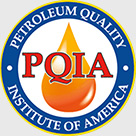 Products with the American Petroleum Institute (API)’s newest passenger car motor oil classification, API SN Plus, have begun to hit the market.
Products with the American Petroleum Institute (API)’s newest passenger car motor oil classification, API SN Plus, have begun to hit the market.
The new sub-classification was proposed in November 2017 at a meeting of the group’s lubricant division in Detroit. Licensing for the new classification began on May 1 and any marketer who wants to apply for licensing must do so through the API website. The new classification was created at the request of automakers, who were concerned about repeated delays to the ILSAC GF-6 classification upgrade. Originally slated to come to market in 2016, GF-6 will likely not be available for licensing until 2020.
Related: Learn more about PetroChoice’s Engine Oil Products
The primary function of the upgrade is to reduce incidences of low speed pre-ignition (LSPI), a premature ignition of the main fuel charge that can occur in gasoline engines. These random events are most common in turbocharged direct-injection vehicles. Many researchers believe that engine oils can help prevent that from happening.
“The upgrade allows for better control over LSPI,” Mike Wyant, Director of Technical Services for PetroChoice, said. “The step change happened now because the next license category upgrade, ILSAC GF-6, wasn’t going to occur for another couple of years. OEMs felt they needed the LSPI remediation much sooner.”
Wyant said a change in the additive package is what separates SN Plus lubricants from their SN predecessors.
“There’s a chemical adjustment with the detergency that reduces the calcium content and requires the increase of another element, typically Magnesium, that allows for the reduction of the frequency of LSPI,” Wyant said. “There are also gains in turbo charger protection as well.”
While the change in additive package may have an impact on pricing, it is unlikely to be drastic. Wyant said lubricant manufacturers can begin creating products that fit within the guidelines for SN Plus by simply changing the additive package, although he did stress the need for updating the licensing for any already existing products.
“There will be few changes for manufacturers. Merely switching to an SN Plus compliant additive package will take care of the issue,” Wyant said. “There is also a need for updating the API Licensing for each effected product.”
The new sub-classification was pushed heavily by manufacturers, who were concerned that LSPI problems would continue to get worse before more comprehensive new standards could be adopted.
“OEMs are the driving force behind SN Plus,” Wyant said. “Their concern over LSPI is very real and very serious. The damage caused by LSPI can destroy an engine.”



